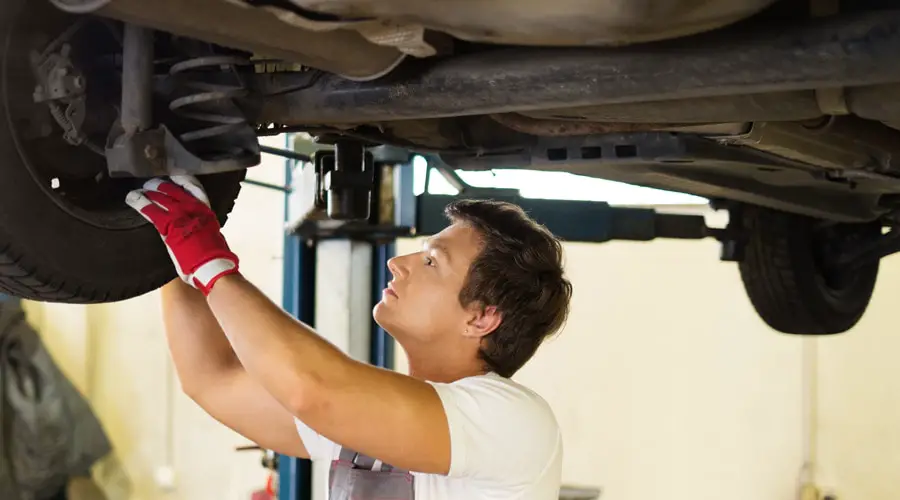
Source: canva.com
Keeping your car in good shape means keeping an eye on all visible components. Having worn or damaged parts can cause many issues. The front end of your vehicle is one of those areas that needs to be maintained to avoid problems. Most cars front end assemblies consist of suspension parts, including:
- Ends of tie rods
- Idler arm
- Pitman arm
- Rack and pinion
- Ball joint
- Shocks
- Struts
There may be other parts as well depending on the make and model of your vehicle. If you notice the vehicle feels differently, hear new noises, or see some odd tire wear then you want to make sure the front end doesn’t have an issue. Understanding the parts of the front end assembly helps you decide what might need to be done and if you can do the work yourself or if it needs to go to your mechanic.
Front End of Your Vehicle
This area of the car is made up of two main areas, the suspension and the steering. Obviously, the steering is what directs your car when it is in motion. The suspension helps the car absorb the bumps and veers on the roads while you drive. It makes travel comfortable.
Parts of the Steering Assembly
This is where you find the steering gear. It may be a gearbox or what’s called a rack and pinion assembly. These parts are attached to your steering wheel by the steering shaft. This is then attached to the knuckles with the tie rod end.
Suspension Assembly
These systems can be different depending on the vehicle but most have bushings, a ball joint, control arm, or possibly track bars and shocks or struts.
Checking the Front End Assembly
Before you check the front end, you must raise the vehicle up and off the pavement so you can see underneath. You will need a jack, jack stands, and wheel chocks. Follow these steps:
- Park on a surface that is level and hard. Make sure the parking/emergency brake is on.
- Place wheel chocks by the back tires.
- Raise the front up with the jack and make sure that you are using the correct jacking points.
- Lower it onto the stands in the appropriate spots. The stands should be under pinch welds before the vehicle is set down on them.
Once you have the front end raised from the ground, you can begin inspecting the front end assembly.
Front End Check
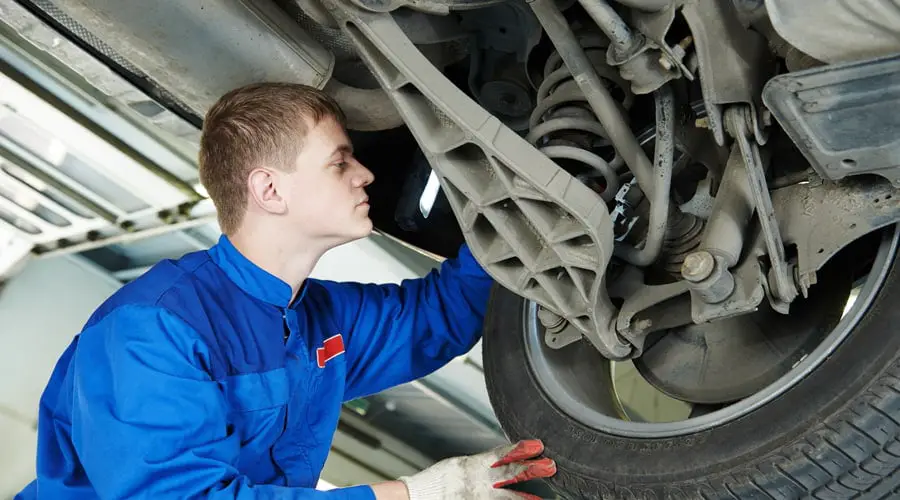
Source: canva.com
1. Tire Wear
The first thing that needs to be done is a check of the tire wear. If you see that the tires have an odd wear pattern then you may have a front end issue.
2. Tie Rods
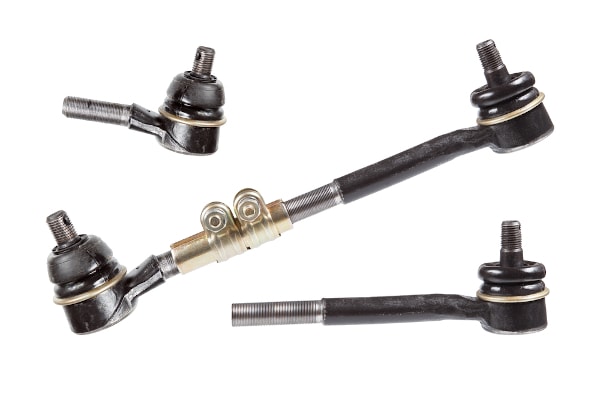
Check and observe if the tire and wheel assembly are loose. That means they have free play and are moving too easily. Hold one of the front tires at three and nine o’clock. Try and move the tire back and forth. There should not be any movement. If there isn’t then the tie rods should be in good shape.
3. Ball Joint
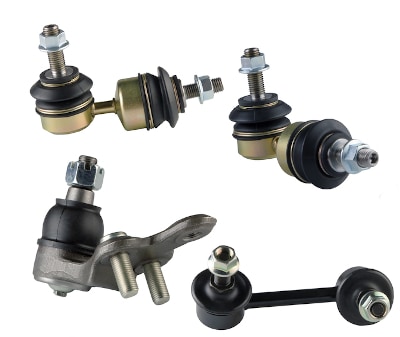
Tie rods are another important component of your front end assembly. They have a ball joint and the ball can wear, allowing for too much movement. If you hold this assembly then pull to raise and lower it, it should not move. If it does, you may need to replace the tie rod.
4. Rack and Pinion
Check the rack and pinion for any leaks or worn bushings. If there is any leakage at the then it will have to be repaired. The mounting bushings also have to be assessed to see if there are cracked or if any parts have gone missing. If you find issues, replacement is necessary.
Suspension Check
1. Tires
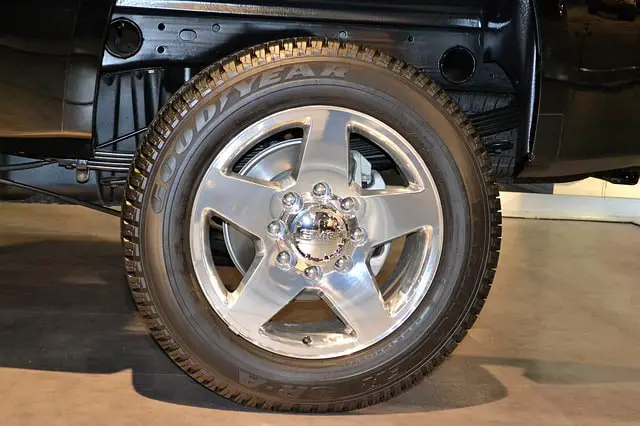
Be aware of tire wear that is described as cupped where you see various spots of thickness around the tire. It happens from the tire bouncing during driving and is a signal that your shocks, struts, or ball joints have issues.
Hold a front tire at 12 and six o’clock then pull on it to see if there is free play. You don’t want it to move. If it does, you will have to look at all suspension parts.
Put some of the best tire shine on when you’re done to make em sparkle.
2. Shocks and Struts
Checking your shocks or struts has to be done before the vehicle is on the stands. If you push on the hood of the car, you can make it bounce. Count each time it bounces after you stop pushing on it. If it is less than two then everything should be OK. More than two and the parts probably need work. Once you put the vehicle on the stands, look for leaks and damage to see if any work needs to be done.
Learn the difference between a shock vs strut.
3. Ball Joints
he ball joints are used as pivots for the steering knuckle. This lets the suspension turn when steering. These parts can wear down. Put a bar in at a tire base between it and the pavement. Get someone help you so you can see movement with the joint.
4. Control Arms and Track Bars
The bushings you need to look at are found on the control arm as well as the track bars. They are usually rubber and can stop doing what they’re supposed to do as they get older. See if there are any cracks, stretching, missing pieces, or oil saturation. All these things are reasons that you may need to put new ones on.
Read about What Happens If Control Arm Breaks While Driving
Final Thoughts
Once you have inspected the front end assembly of your vehicle and had any necessary work done, make sure the whole assembly is aligned. You can get the front suspension parts you need and do the work yourself or get a mechanic to do it if that isn’t something you can do. No matter who does the work, a wheel alignment should be done with a computerized alignment machine after all the other work is completed and should be done at least once every year.